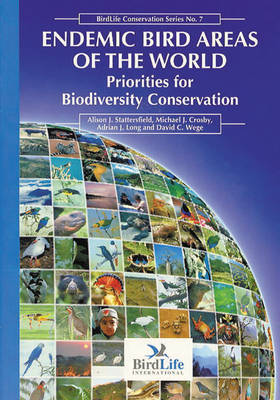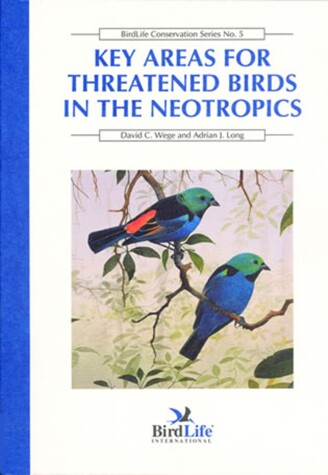Birdlife Conservation
2 total works
v. 7
Endemic Bird Areas of the World
by A.J. Stattersfield, Micheal J. Crosby, Adrian J. Long, and David C. Wege
Published January 1998
More than a quarter of bird species are concentrated in areas that together make up just one per cent of the earth's land surface. These restricted range species include almost three-quarters of all threatened birds. BirdLife International has identified 218 Endemic Bird Areas (EBAs), which hold at least two restricted range species, although some support more than 60. EBAs provide a reasonable overlap with the biodiversity hotspots identified by other conservation organisations, and are a focus for conservation action. At the heart of this book are descriptions of all 218 EBAs, including key habitats, major threats and conservation initiatives and a detailed map. Tables list the restricted-range bird species present, with their global status, habitat requirements and distribution. Introductory sections present global and regional overviews. The authors discuss the wider conservation relevance of EBAs, including why birds are good indicators of biodiversity, and how EBAs can be used effectively to influence policy-makers. 'A comprehensive overview of the regions of the world that support the vast majority of our imperilled and vulnerable birds' - "Birding".
'Will be mined extensively for years by those studying global patterns of biodiversity' - "The Quarterly Review of Biology". 'The ultimate guide to range-restricted birds. Conservation managers, ecologists and birders alike will want to own this unprecedented work' - "Conservation Biology". 'The ultimate 'where to watch birds" - "BBC Wildlife".
'Will be mined extensively for years by those studying global patterns of biodiversity' - "The Quarterly Review of Biology". 'The ultimate guide to range-restricted birds. Conservation managers, ecologists and birders alike will want to own this unprecedented work' - "Conservation Biology". 'The ultimate 'where to watch birds" - "BBC Wildlife".
v. 5
Key Areas for Threatened Birds in the Neotropics
by Enrique H. Bucher and David C. Wege
Published 1 January 1995
Approximately 3,600 bird species occur in the 21 countries of mainland Central and South America, of which 290 are listed as threatened. Taking a country-by-country, site-based approach, this book documents the 596 most important areas for the conservation of these threatened birds. Introductory chapters define Key Areas and the distribution of threatened species, describe habitats, threats and conservation, and identify the gaps in our knowledge of Neotropical birds. Copyright BirdLife International. Distributed in the Americas by Smithsonian Institution Press.

